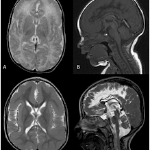Main Article Content
Abstract
Malformations of cortical development (MCD) constitute a group of brain disorders which are mainly genetic in origin. MCD form an important cause of cerebral palsy, intellectual disability and refractory epilepsy. Despite considerable progress which has been facilitated by advances in the fields of neuroimaging and genetics, the high degree of phenotypic and genotypic heterogeneity associated with MCD continues to hamper etiological diagnosis and cousneling of numerous patients and families.
The first section of this manuscript is a plea for detailed clinical phenotyping in MCD and reviews the differential diagnosis and clinical work-up based on six clinical case reports. The second part provides a review of personal highlights in the field of MCD-research, and ends with an outlook to the joint efforts of international and interdisciplinary collaborations, which will hopefully result in better care for patients with MCD and their families.
Article Details
Copyright (c) 2019 Anna C. Jansen

This work is licensed under a Creative Commons Attribution-NonCommercial-ShareAlike 4.0 International License.
Authors who publish with this journal agree to the following terms:
Authors retain copyright and grant the journal right of first publication with the work simultaneously licensed under a Creative Commons Attribution License that allows others to share the work with an acknowledgement of the work's authorship and initial publication in this journal.
Authors are able to enter into separate, additional contractual arrangements for the non-exclusive distribution of the journal's published version of the work (e.g., post it to an institutional repository or publish it in a book), with an acknowledgement of its initial publication in this journal.
Authors are permitted and encouraged to post their work online (e.g., in institutional repositories or on their website) prior to and during the submission process, as it can lead to productive exchanges, as well as earlier and greater citation of published work (See The Effect of Open Access).

